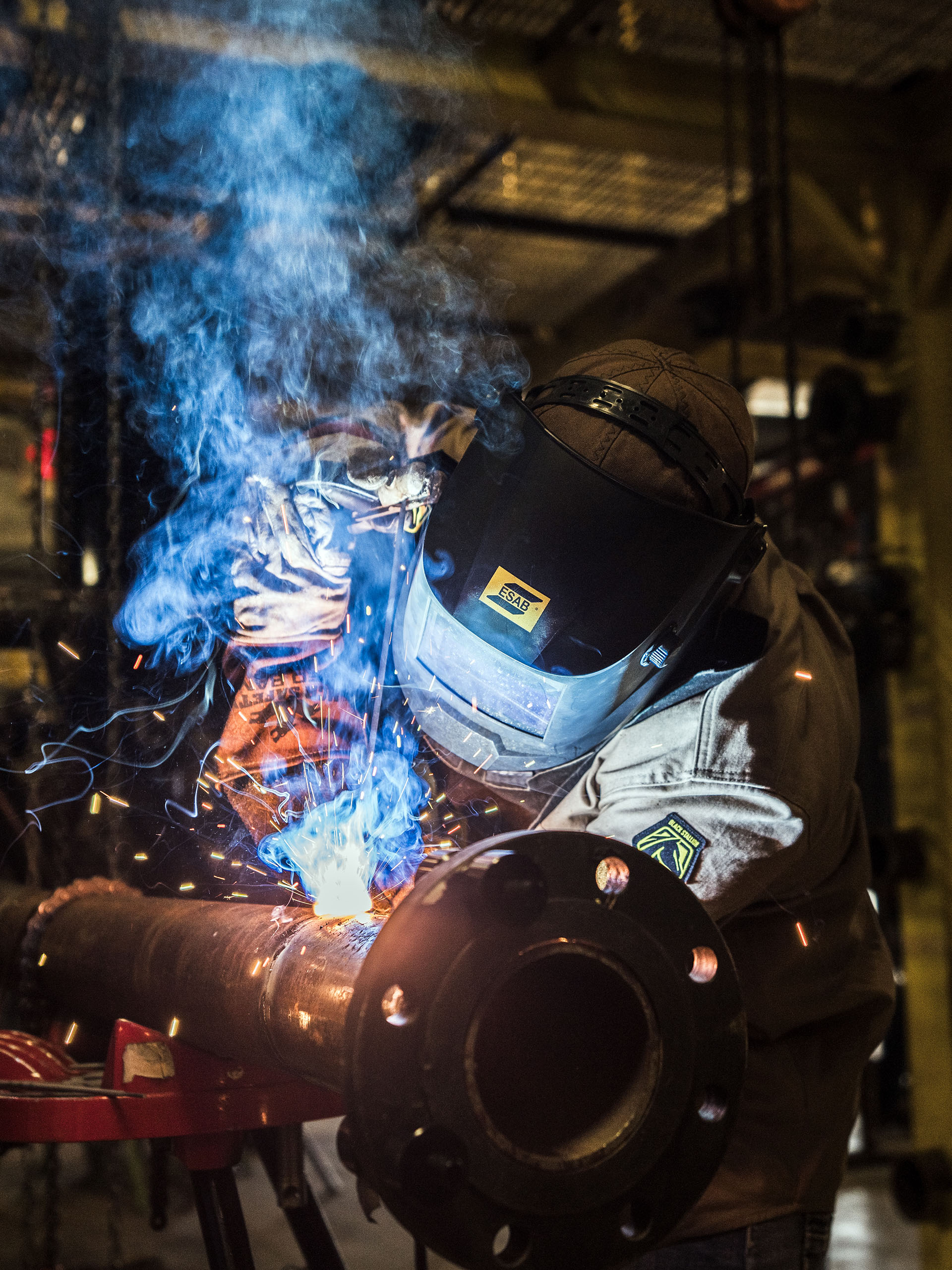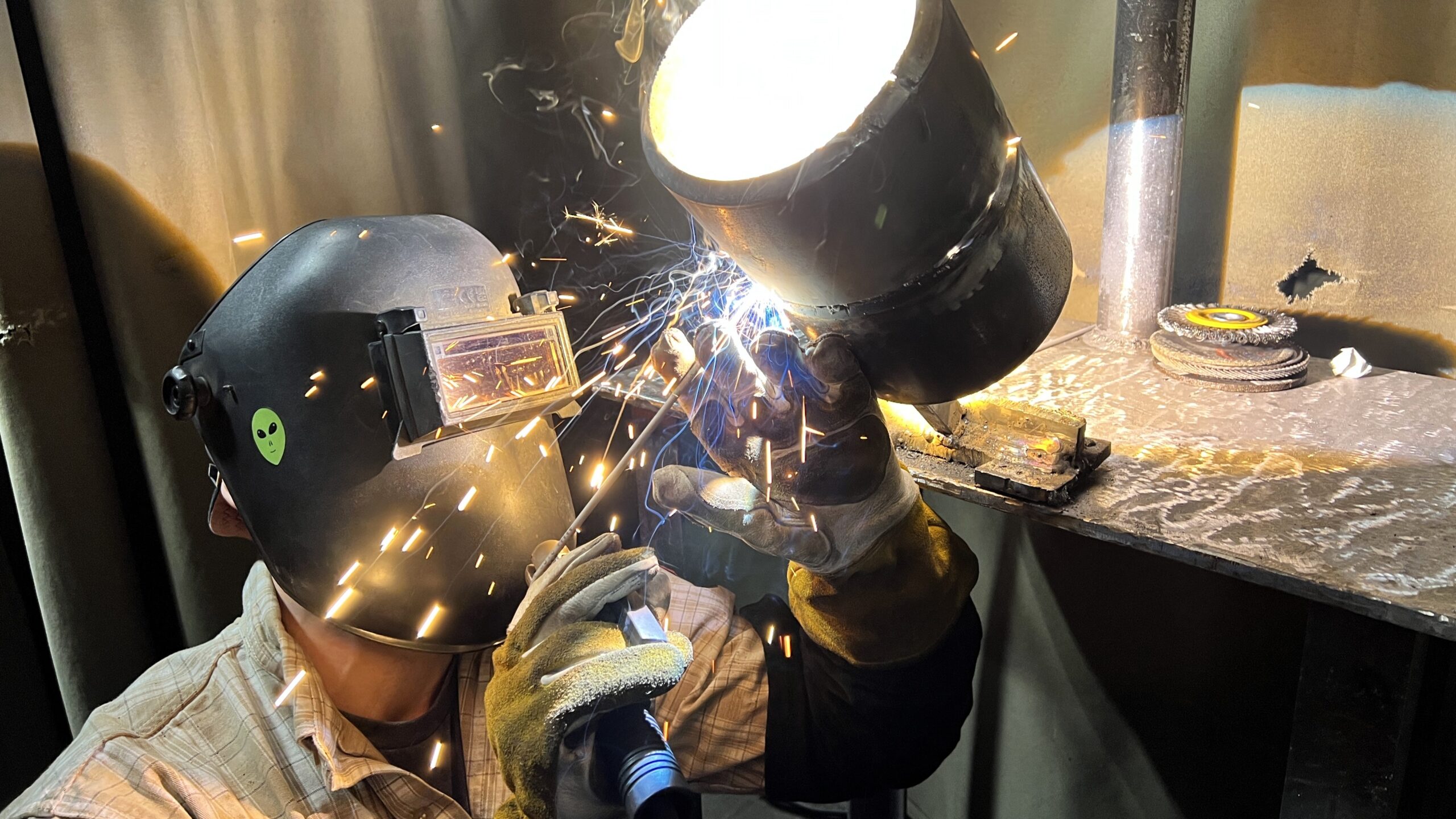Usual Welding Repair Work Issues and Just How to Address Them Efficiently
Welding repair services often experience a series of concerns that can endanger the honesty of the end product. Common problems include poor penetration, porosity, and imbalance, among others. Each issue offers one-of-a-kind difficulties that require particular approaches for resolution. Comprehending these concerns is vital for welders intending to enhance their abilities and end results. This discussion will certainly explore these typical welding repair service issues and effective techniques to address them.
Poor Infiltration
Insufficient infiltration occurs when the weld steel stops working to fully fuse with the base material, causing weak joints and prospective architectural failings. This issue typically stems from inadequate warmth input, wrong electrode angle, or incorrect welding rate. Welders may run into poor infiltration as a result of a mistake of the necessary parameters for a details product thickness or kind. In addition, contamination on the base material's surface can impede reliable bonding, worsening the trouble. To deal with inadequate penetration, welders must ensure suitable settings on their devices and maintain a clean work surface. Routine evaluation of welds is advised to determine any deficiencies early, enabling prompt modifications and the avoidance of jeopardized structural stability in bonded assemblies.
Porosity
Porosity is a typical defect in bonded joints that materializes as tiny gas bubbles trapped within the weld steel. This problem can jeopardize the stability of the weld, bring about decreased toughness and potential failing under tension. Fabrication. Porosity normally emerges from contamination, dampness, or improper welding strategies, which allow gases to get away into the molten weld pool. To resolve porosity, welders must assure correct surface prep work, preserve a tidy functioning setting, and make use of appropriate welding specifications. Furthermore, picking the right filler product and protecting gas can mitigate gas entrapment. Regular examination and screening of welds can aid determine porosity early, guaranteeing prompt corrective actions are taken, consequently preserving the quality and dependability of the welded structure
Imbalance
Imbalance in welding can develop from numerous aspects, consisting of incorrect configuration and thermal expansion. Comprehending the source is vital for effective resolution. A number of adjustment strategies are readily available to straighten parts and assure architectural honesty.
Reasons for Imbalance
Welding misalignment commonly comes from a selection of underlying issues that can endanger architectural honesty. One main cause is incorrect fit-up of parts prior to welding, which can cause spaces and unequal surface areas. Variants in thermal development throughout the welding procedure can additionally result in distortion, particularly if the products being joined have different coefficients of expansion. Additionally, insufficient clamping and fixturing might fail to hold elements safely in position, bring about activity throughout welding. Poorly maintained tools, including welding machines and devices, may introduce variances in the weld grain, further adding to imbalance. Finally, operator error, coming from not enough training or experience, can likewise play a significant function in creating misaligned welds.
Adjustment Strategies Offered
Resolving imbalance effectively calls for a mix of rehabilitative strategies tailored to the particular problems handy. One common method is making use of jigs or fixtures to hold elements in the proper placement throughout welding, ensuring regular positioning. Additionally, pre-heating the products can aid decrease distortion and boost fit-up. For significant imbalance, mechanical realignment methods, such as utilizing hydraulic jacks or clamps, can be utilized to deal with the position prior to welding. Post-weld heat treatment might additionally be needed to eliminate stress and anxieties brought on by imbalance. Mindful examination and modification during the configuration phase can avoid imbalance problems from becoming considerable issues, advertising a smoother welding procedure and improving total architectural integrity.
Distortion
Distortion is a common challenge in welding that can develop from different factors, consisting of irregular cooling and heating. Understanding the reasons for distortion is vital for implementing effective prevention techniques. Addressing this issue not just enhances structural integrity yet likewise improves the overall high quality of the weld.
Sources of Distortion
When based on the extreme heat of welding, materials often undertake modifications that can result in distortion. This phenomenon primarily occurs from thermal expansion and contraction during the welding process. As the weld area warms up, the product broadens; upon air conditioning, it acquires, which can create inner stresses. On top of that, irregular home heating across a workpiece can aggravate these stress and anxieties, leading to bending or bending. The sort of material likewise plays a significant duty; metals with varying thermal conductivity and coefficients of expansion may react differently, bring about uncertain distortions. Furthermore, poor joint style and poor fixturing can add to imbalance throughout welding, raising the probability of distortion. Understanding these causes is necessary for effective welding repair and prevention strategies.
Avoidance Techniques
Efficient avoidance strategies for distortion throughout welding emphasis on managing warmth input and making sure proper joint style. Preserving a constant warm input helps to minimize thermal expansion and contraction, which can cause distortion. Utilizing strategies such as preheating the workpiece can additionally lower the temperature level gradient, advertising consistent home heating. Furthermore, selecting suitable joint layouts, such as T-joints or lap joints, can improve security and lower stress and anxiety concentrations. Implementing appropriate fixturing to protect the work surfaces in position better aids in keeping placement during the welding procedure. Staggered welding sequences can distribute warm extra uniformly, stopping localized distortion. By using these approaches, welders can significantly decrease the possibility of distortion and boost the general high quality of their welds.
Cracking
Breaking stainless steel electrode is an usual issue come across in welding repair work, usually resulting from various variables such as incorrect cooling prices, product option, or inadequate joint prep work. The occurrence of fractures can substantially jeopardize the stability of the weld, causing potential failings throughout procedure. To resolve this concern, welders have to initially evaluate the source, ensuring that materials work and appropriately picked for the particular application. Additionally, regulating the air conditioning rate during the welding procedure is crucial; fast cooling can generate stress and result in breaking. Correct joint design and preparation additionally add to minimizing the danger. Carrying out these strategies can enhance weld quality and durability, eventually decreasing the chance of fracturing in finished weldments.

Incomplete Combination
A considerable issue in welding fixings is insufficient combination, which occurs when the weld metal does not appropriately bond with the base product or previous weld passes - Belgrade Fabrication. This problem can cause weaknesses in the joint, possibly endangering the integrity of the welded structure. Elements contributing to insufficient blend consist of inadequate heat input, incorrect welding technique, and contamination of the surfaces being joined. To resolve this concern efficiently, welders need to guarantee proper pre-weld cleaning and surface prep work, in addition to readjust their welding specifications to attain sufficient infiltration and blend. Regular inspection throughout the welding procedure can additionally aid determine insufficient combination early, allowing for prompt restorative actions to boost the total quality of the weld
Overheating
While welding repair work can improve architectural stability, overheating offers a considerable obstacle that can lead to material deterioration. Extreme warmth during welding can alter the mechanical homes of metals, leading to decreased strength, enhanced brittleness, and warping. This phenomenon is specifically crucial in high-stress applications where architectural reliability is critical. Determining overheating can include aesthetic assessments for staining or distortion, as well as keeping track of temperature level throughout the welding process. To reduce the threats connected with overheating, welders need to employ appropriate methods, such as managing warmth input, changing travel speed, and using ideal filler materials. Furthermore, applying pre- and post-weld warm therapies can assist restore material residential or commercial properties and enhance the general quality of the repair work, ensuring lasting efficiency and security.
Frequently Asked Concerns
What Are the Usual Indications of a Welding Flaw?

Just How Can I Examine My Welds for Quality?
To examine welds for quality, one can make use of aesthetic inspections, ultrasonic testing, and radiographic techniques. Each technique ensures structural stability, determines flaws, and verifies adherence to specified requirements, ultimately enhancing the integrity of the bonded joints.
What Safety and security Preventative Measures Should I Take While Welding?
When welding, one ought to focus on security by using proper individual safety tools, ensuring proper air flow, protecting combustible materials away, preserving a tidy workspace, and being conscious of environments to protect against accidents and injuries.
Can I Repair a Weld Without Redesigning the Entire Joint?
Fixing a weld without amada weld tech remodeling the entire joint is possible, depending upon the damages (Belgrade Fabrication). Techniques such as grinding, adding filler material, or using a welding procedure can effectively address certain defects while preserving the bordering framework
What Tools Are Vital for Effective Welding Repairs?
Essential tools for effective welding repair work include a welding machine, cable brush, mill, protective equipment, clamps, and filler materials. Each tool plays an essential role in making certain high quality and safety and security throughout the repair process. Porosity usually develops from contamination, wetness, or improper welding methods, which permit gases to leave into the liquified weld swimming pool. Poorly conserved equipment, including welding machines and tools, might present inconsistencies in the weld grain, further contributing to misalignment. When subjected to the extreme warmth of welding, materials usually undergo modifications that can lead to distortion. Splitting is a common issue experienced in welding repairs, frequently resulting from different variables such as improper cooling rates, material selection, or inadequate joint prep work. A significant issue in welding repair services is insufficient fusion, which happens when the weld metal does not sufficiently bond with the base material or previous weld passes.